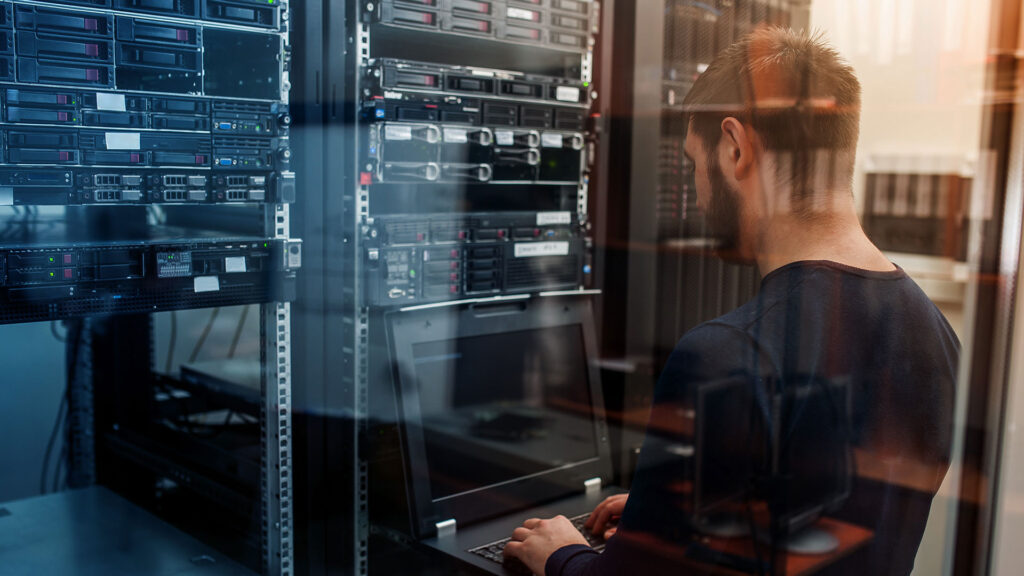Blog
Secure Your Supply Chain: Why and How
In an increasingly interconnected world, companies and organizations rely heavily on their suppliers and third-party actors, especially concerning IT services and other critical functions. These partners play a crucial role in daily operations and often provide specialized expertise that may not be available internally. However, this dependency also brings risks. Relying entirely on external suppliers […]

In an increasingly interconnected world, companies and organizations rely heavily on their suppliers and third-party actors, especially concerning IT services and other critical functions. These partners play a crucial role in daily operations and often provide specialized expertise that may not be available internally. However, this dependency also brings risks. Relying entirely on external suppliers without a robust continuity plan can lead to severe consequences during unexpected events or disruptions.
A clear example of this risk is when a critical supplier experiences a disruption, a security incident, or goes bankrupt. An event like that can immediately and seriously affect your organization’s ability to operate effectively, such as meeting customer expectations and demands and protecting sensitive information.
To manage these risks, it’s important not to rely solely on your suppliers but also to have a plan B. This means actively working with the supply chain and having a Business Continuity Plan (BCP) and a Disaster Recovery Plan (DRP) in place.

It’s important that all stakeholders understand the situation
It’s not by chance that governments are now tightening the requirements for working with information and cyber security or that the EU imposes higher demands on member states. Some examples of these stricter requirements are the NIS2 directive and the DORA regulation, which represent the EU’s ongoing efforts to address the growing cyber threats and ensure a secure digital future for all member states.
Together, DORA and NIS2 aim to increase digital and cyber security resilience to protect critical infrastructure and ensure economic stability in Europe. Both cover many vital areas, and one key area they address is securing the supply chain. NIS2 deals with and sets requirements for security in the supply chain, including security aspects related to the relationships between entities and their direct suppliers or service providers. The DORA regulation requires the management of third-party ICT risks (Information and Communication Technology). Even ISO 27001 emphasizes the importance of securing the supply chain.
The message here is clear: Cybersecurity must be a priority for the entire society, both public and private sectors!
The Importance of a Secure Supply Chain
Don’t let risks dictate strategy – steer strategy towards minimizing risks.
Suppliers pose a significant risk to your business, as you lack direct control and influence over them while likely being heavily dependent on their services and management of information assets. A misstep from a supplier can immediately become a challenge for you and, in the worst-case scenario, lead to damages to your reputation, financial losses, or a weakened market position. These risks make it essential to evaluate carefully how dependent your business is on these suppliers. Are they handling critical data and providing services vital for your business growth and general well-being? Establishing a robust and secure supplier management system is therefore crucial.
It’s important to actively control the situation by strengthening your relationships with your suppliers and developing a sustainable supply chain. It is your responsibility to ensure your company’s long-term success and well-being. By proactively managing and minimizing these risks, you can ensure that you are not only reacting to threats but strategically preventing them.
How to Secure Your Supply Chain
Some simple tips for securing your supply chain include:
Risk Assessment and BIA (Business Impact Assessment): Identify which parts of your business depend most on third-party suppliers. Assess the potential risks and consequences of a disruption in their services.
Implement a specific policy for the area and establish a process for supplier management.
Implement an index of third-party suppliers.
- Ensure that you maintain an agreed level of information security in supplier relationships.
- Have clear and well-defined security requirements in supplier agreements. Protecting your information assets from potential risks that may arise through third-party relationships is critical.
- Ensure that you have a mutual agreement on disaster recovery. Work with your suppliers to ensure they also have robust DRP plans in place, plans that are integrated with your organization’s DRP.
- Practice makes perfect. Regularly practice your BCP and DRP scenarios. Update your plans to reflect changes in your business, the threat landscape, and the external environment.
- Review strategies such as supplier diversification to reduce dependence on a single source. In other words, avoid putting “all your eggs in one basket.”
- Regular communication with suppliers and understanding their capacity and limitations are also crucial.
A Continuous Effort
Securing your supply chain is an ongoing process that requires attention and adaptation. By proactively managing the dependency on critical suppliers and third-party actors, organizations can reduce their vulnerability to disruptions and ensure they can continue their operations under the most challenging circumstances. This requires a balance between leveraging the expertise and efficiency of external partners and maintaining sufficient control and flexibility to adapt to unexpected events.
Understanding the Risks in the Supply Chain
Is your supply chain as secure as it could be? By understanding the risks, adopting best practices, and implementing effective strategies, your company can survive and thrive in an increasingly uncertain world.
Download our whitepaper and do contact us for more info:

NIS2: Vision, key objectives, and tactical strategies for your organization
This whitepaper provides information on the NIS2 directive, including its primary goals, scope, and the requirements imposed on companies.
About the author

Caroline Dristig
Consultant, Conscia Sweden
Caroline Dristig is a multi-award-winning consultant in information security. She has experience in education, security certification, and practical incident response in large enterprises.
Related








